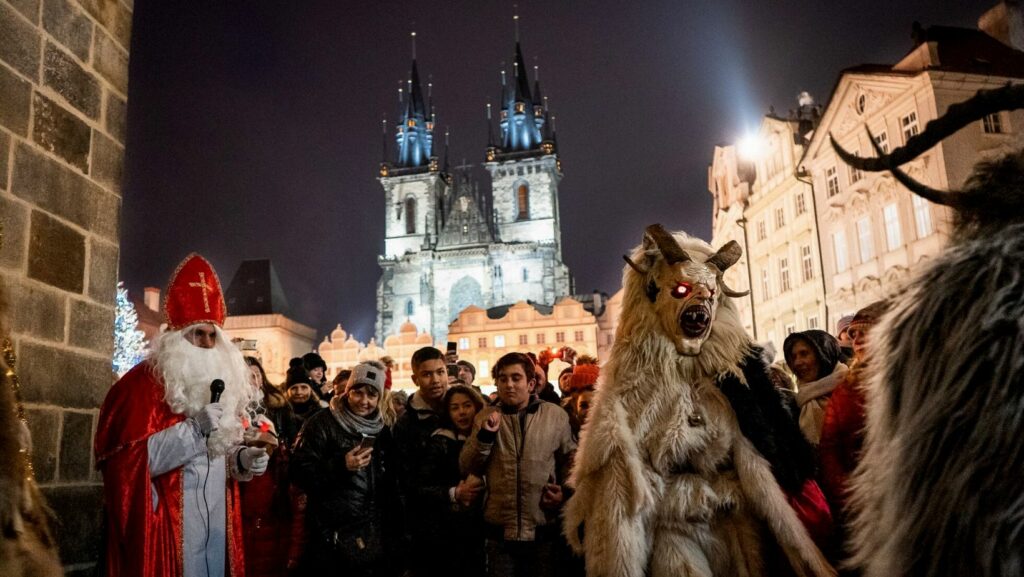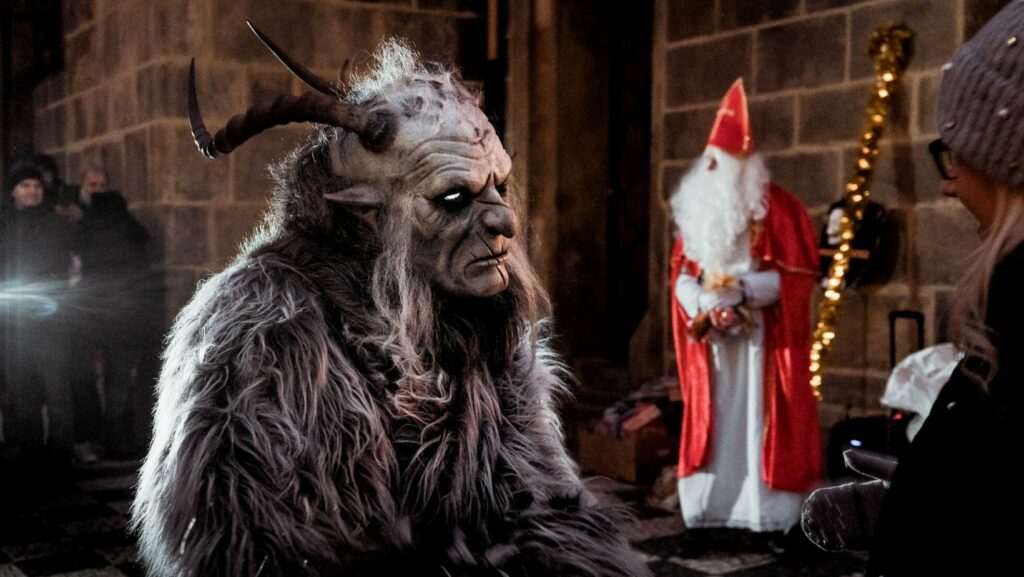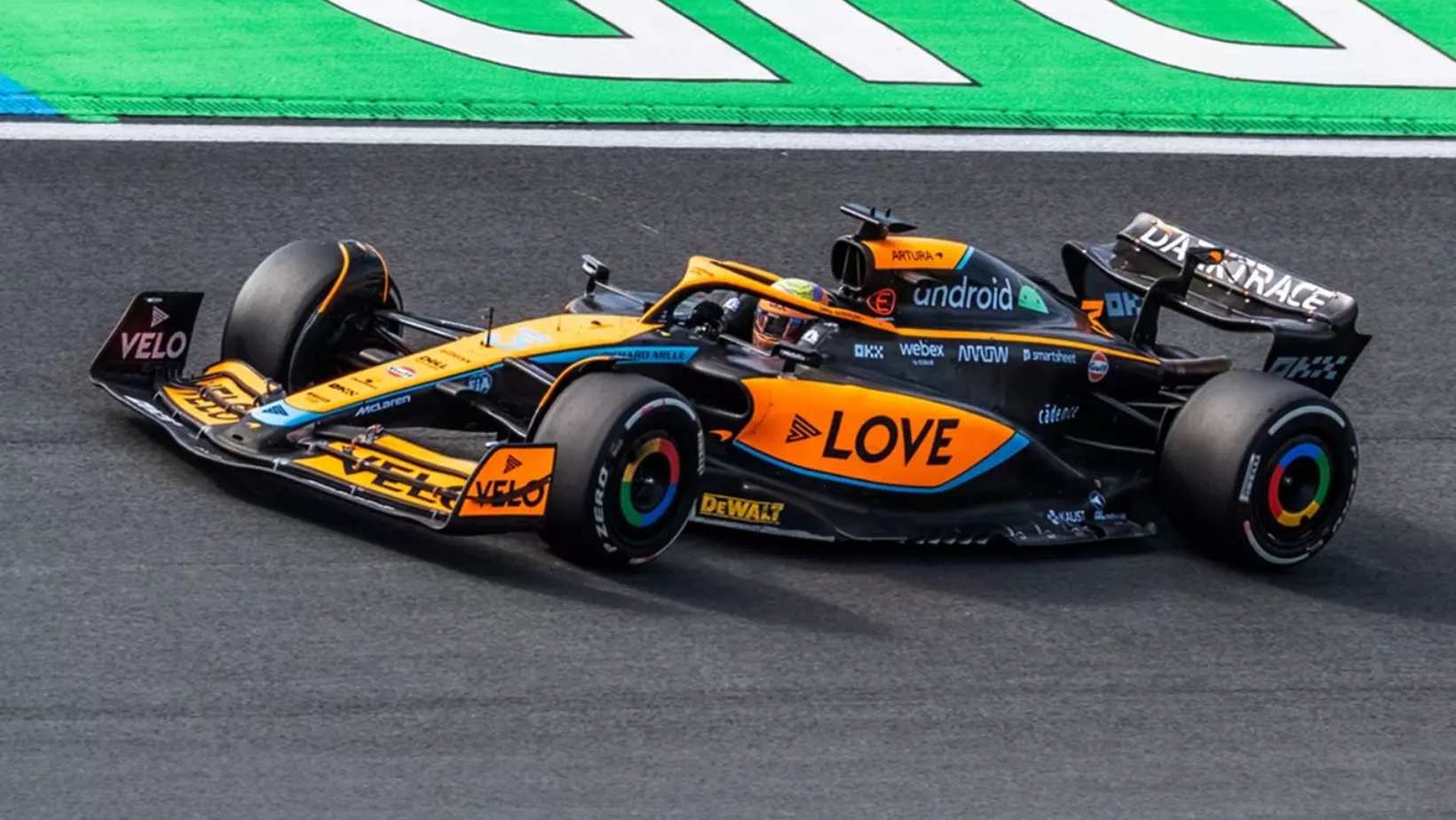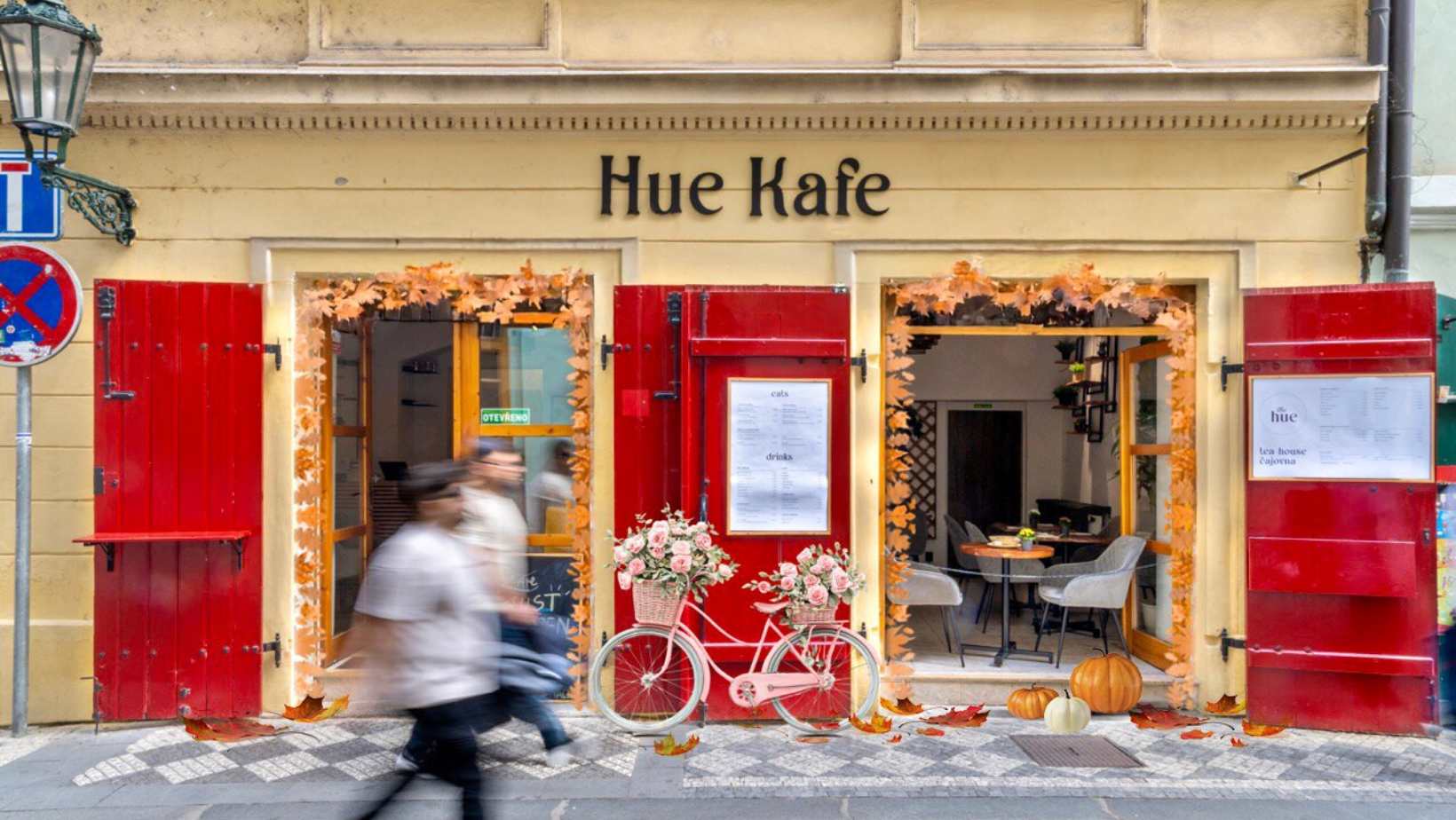The Czech Christmas Tradition of Mikuláš
Prague Morning

The charming tradition of St. Nicholas falls on the eve of St. Nicholas Day, December 5th.
If you find yourself walking the streets on that evening, you may run into a group of strange characters: St. Nicholas (Mikuláš), the Angel (anděl) who represents the Good, and the Devil (čert) representing the Evil. All wear costumes.
Mikuláš looks a bit like Santa Claus whose origin was supposedly inspired by St. Nicholas.
All three characters walk the streets, stopping children and asking them if they were good in the past year. Most kids say yes and sing a song or recite a short poem.
They are then rewarded with sweets, candy or other treats, which are handed out by the Angel. Bad kids would be put in the Devil’s sack and taken to hell, or would only get a sack of potatoes or coal instead of candy – of course it does not really happen!

What does the tradition look like?
On the evening of December 5th, Mikulas knocks on the doors of Czech households with the devil and an angel alongside him, handing out treats to good children.
The devil’s work, on the other hand, is to spook and symbolically punish those children who were not kind and good. St. Mikulas is portrayed as a man with a long, white beard dressed in a red bishop’s garment. Children mostly receive chocolates or snacks, but also oranges or potatoes. “Bad children” may receive coal. Children usually have to sing a song or a rhyme in order to get a candy.
But, why do we hand out candies?
The tradition has its roots in the 10th century. It started during boy bishop games, which took place in monastery schools. In the games, one boy would carry a crutch with which he took to the monastery for one day as St. Mikulas and was master of the school.
In the 13th century, this holiday became St. Mikula’s day, and a new game was invented in which a groom handed out treats to children. One of the grooms, named Ruprecht, was supposed to reward but also scare children, which, over the course of time, changed to the devil and angel joining Mikulas on his gift-giving errand. Since then, this trio wanders from one door to another across the whole Czech Republic.
Why is it so popular?
Nowadays, this tradition is loved by almost every child in the Czech Republic, even those who were not so good and kind for the whole year. While it is not a nationwide public holiday in the Czech Republic, but merely a religious observance, it is still a great occasion on which families gather to have a nice evening. The role of Mikulas is often taken up by a friend of the family or a grandad, and not the father, so that children will be surprised.

Would you like us to write about your business? Find out more
-
NEWSLETTER
Subscribe for our daily news










